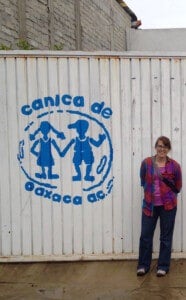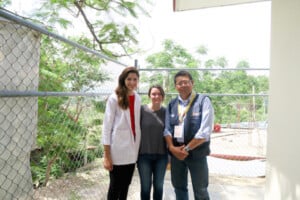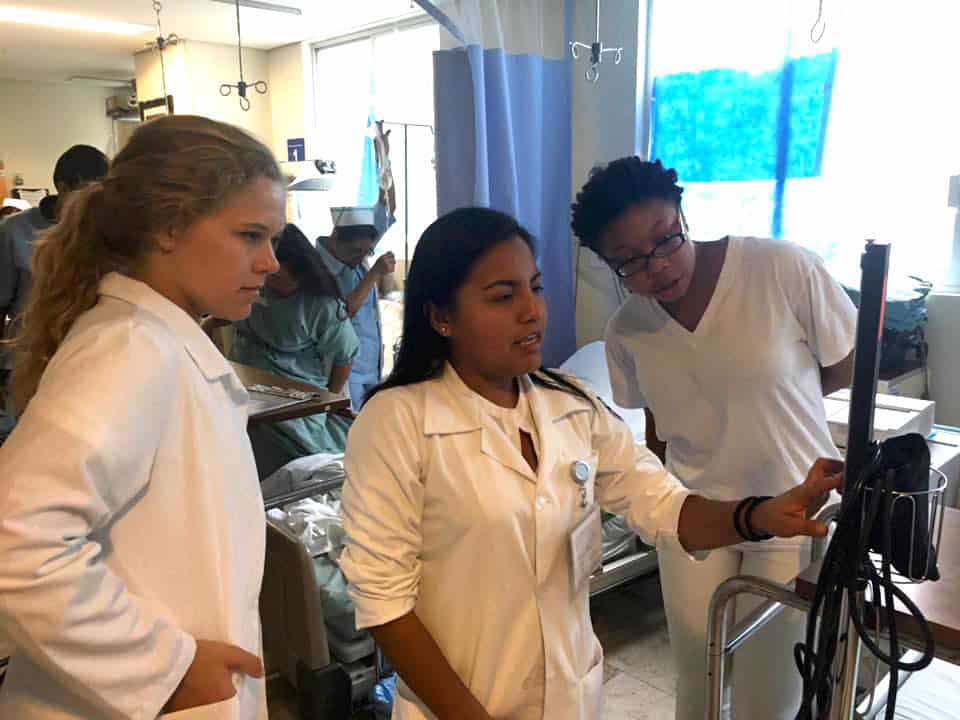Why should we care about the health of people in the Mexican state of Oaxaca?
“For one, we can learn a great deal from resource-poor communities in the global South to promote the health of people living in poor and minority communities here in the United States,” says Melissa Smith, a family medicine physician with global health expertise, and a senior lecturer at the School of Social Work.
Smith adds that working with poor communities in Central Texas reminds us each day that our borders are porous:
“Many of our clients and patients come from Mexico and Central America. As health care providers and social workers we need to understand the context in which people live in and migrate from if we want to help advancing their right to health.”

To foster students’ understanding of these issues and spark their interest in promoting global health equity, Smith has developed a six-week summer program in Oaxaca, Mexico, that she co-teaches with Paola Sesia, a medical anthropologist and public health specialist at the Center for Research and Advanced Study of Social Anthropology (CIESAS- Pacifico Sur) in Oaxaca.
The program gives students from backgrounds as varied as social work, communications, anthropology, and biology the opportunity to learn about global health, improve their Spanish, and experience clinical interactions and public health interventions in a different culture.
We talked with social work students Ellen Line and Daniela Bermea about their experiences with the program this past summer.
How did the program help you develop a global perspective on health?
Line: We had class two mornings a week with professors Smith and Sesia, where we discussed topics such as maternal health and infant mortality, HIV and migration, and under-nutrition. During classes we zoomed out and in a lot: we looked at the issues at the system level and understood trends in health disparities, but we also zoomed in and explored how these issues played in this one person’s story or in this one community. This double focus was very meaningful. We also did field trips on Fridays to different organizations and communities, where we could see how the issues that we studied in class played out for people.
Bermea: We also had guest speakers from organizations, so we could see how they were addressing these issues at the local level. Making this connection between the policy level and what is going on the ground was very important for me. And we got a transnational perspective by looking at issues as related to both Mexico and Texas. For example, the maternal mortality rate in Mexico is higher than in the U.S., but a recent study shows that Texas has the highest maternal mortality rate in the developed world. The reasons may be different, but this type of connection is very eye-opening. We tend to think of the U.S. as a bubble immune to public health issues like maternal mortality but, as we discussed in class, we need to start seeing Texas as part of the global South.
Tell us about your respective community projects.

Line: I chose to work with a local NGO that provides educational support for children of low-income Oaxacan families. The NGO is called CANICA, which is an acronym but also the Spanish word for marble. They have great socio-emotional focus on the work they do with children, which really aligned with my interests. After consulting with the staff there, I developed and implemented a four-lesson series that used visual arts and theatre to work with children on emotions and behavior.
Bermea: I went on clinical rotations at both a state and public hospital in the city and a small clinic in a community that was only a 30-minute bus-ride up the mountains, but really felt like a rural area. I chose the clinical rotations because I wanted to learn about the healthcare system in Mexico so when I work with immigrant populations in the U.S. I understand better where they are coming from. One of the best parts about this program is its flexibility, we were able to make our experiences in Oaxaca what we wanted to be, according to our professional interests.
How was doing your community projects in Spanish?
Line: It was clear to me that it takes a higher level of Spanish to communicate in a professional setting and with both adult and children. My experience in Oaxaca was both inspiring, because I improved during the six weeks I was there, and also humbling, because I realized that if I want to be a bilingual social work practitioner, I have so much work to do!
Bermea: I’m from Mexico and from a Spanish-speaking family, so I was okay navigating the community and communicating with colleagues at the clinic. For me the language challenges came when working with individuals. I had to learn to adjust the vocabulary for the socioeconomic and educational level of the patients.
Why was this program worthwhile for you?
Line: In my last day at CANICA I had the children do a reflection activity. In one section, they had to share something they wanted to change about themselves or their community, based on what we had done together. And as I was walking around answering questions, one of the kids asked me, “Is it okay if I put here that I want to change my anger into happiness?” That made my day! We shared a relatively short amount of time, but I feel that what I did still had an impact on the way they saw themselves.
Bermea: I had never see a baby be born, I had never seen a C-section… I’m Mexican, but I had never set foot on a public hospital before, and it was interesting to see the differences in care. This program was eye-opening in many ways. The public hospital and the clinic where I did the rotations had very few resources, the staff members were overworked, and it was hard to see patients suffering from systemic issues. But we had our group to talk to, and the support network of the class. The realities in the quality and access to care motivates me even more to go into the area of maternal health to make a difference.
Find about the 2017 Global Health program in Oaxaca by attending any of these information sessions.
Posted September 26, 2016. By Andrea Campetella.


